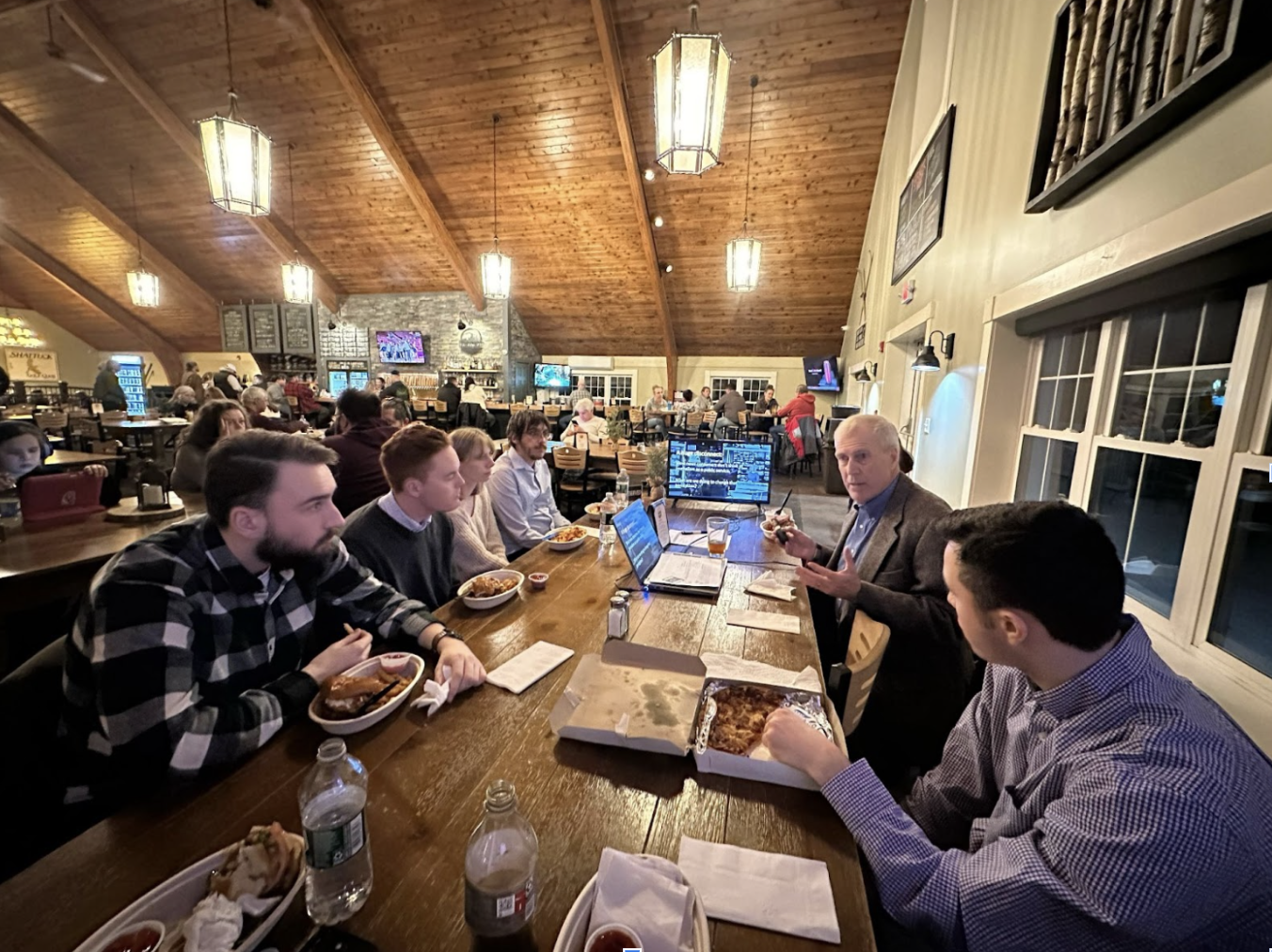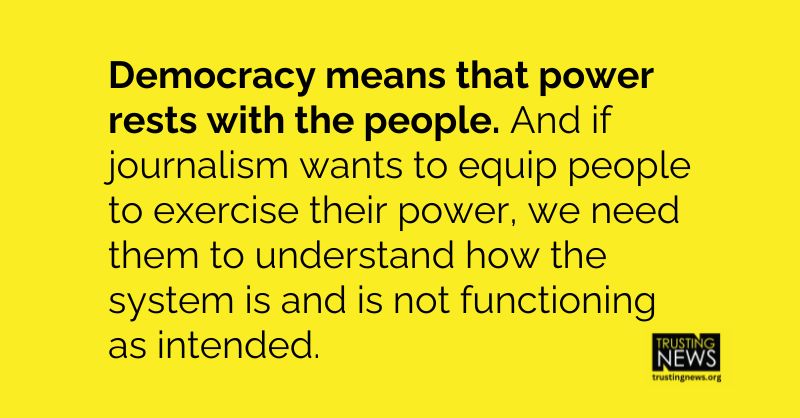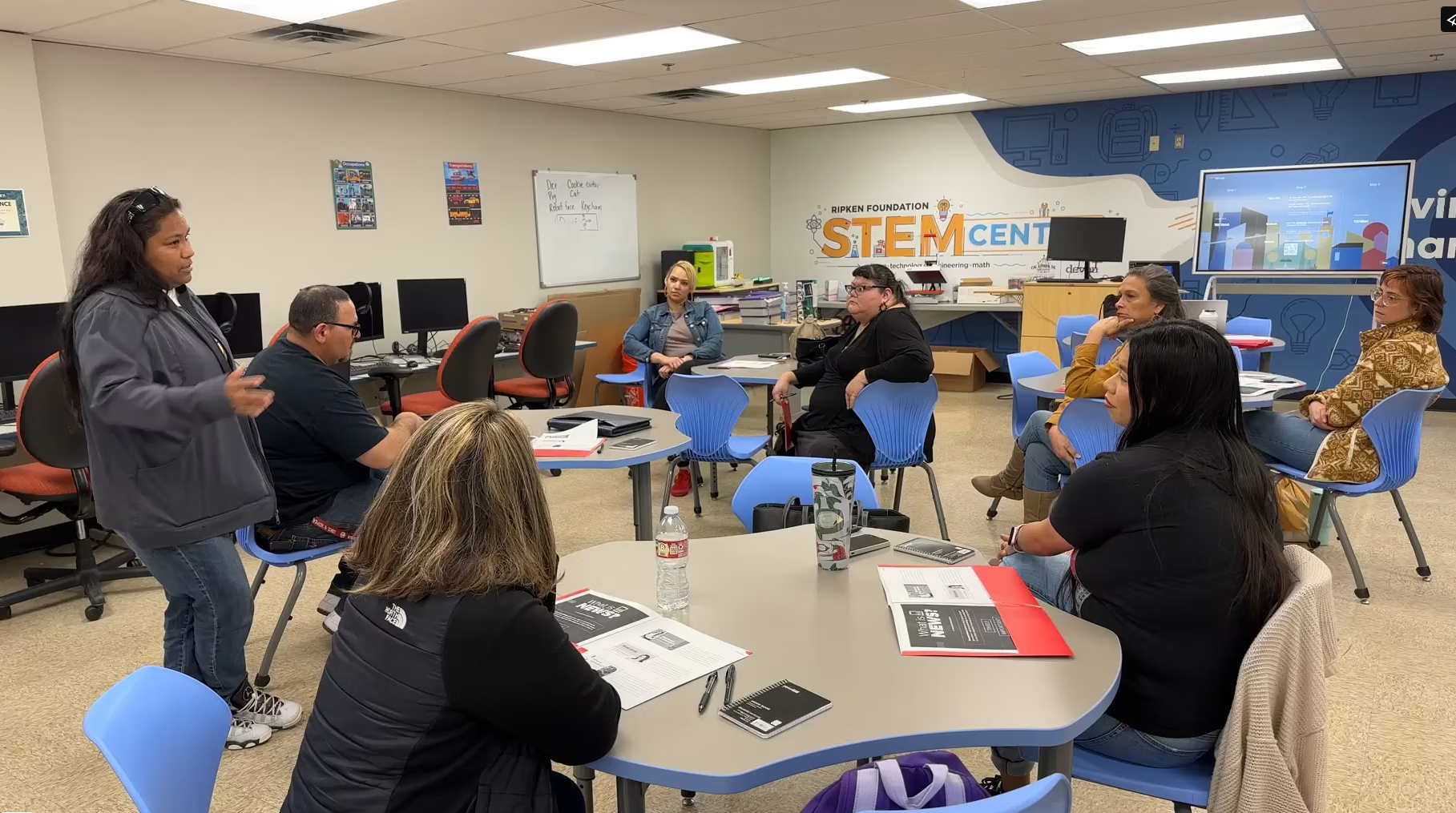
Trusting News embedded in a statewide program with the Oklahoma Media Center
How an ecosystem approach to change in local news is benefitting news consumers in Oklahoma
Today’s local news landscape is complicated and messy, and a lot of words are being written about the demoralizing nature of shrinking resources. That’s all true.
It’s also true that the local news ecosystem overall is diverse and interesting, full of experimentation, collaboration and a continued orientation toward public service.
With those realities in tension with each other, the public needs the news industry to invest in continued evolution and collaboration. We serve the public we have, not the public we wish we had, and our ability to survive and thrive will require deep curiosity and experimentation about who we’re serving and who we’re leaving out.
Our team at Trusting News is committed to working with newsrooms across a wide range of business models, audience sizes, missions and geographies. As we look across the ecosystem, we support newsrooms that have stood tall for decades and are facing strong winds, and we support the new shoots sprouting up.
Our goal is for more people to have access to news that meets their needs and works to earn their trust, and supporting newsrooms across the complex ecosystem feels crucial to us. Wherever people turn for news, we hope they find journalists who believe in transparency, engagement and humility.
Exciting happenings in Oklahoma
That’s why we’ve been so excited over the past several months to be embedded in a statewide program with the Oklahoma Media Center. The program has blended research and action in ways that are a fantastic fit for the approach we’ve practiced since launching in 2016.
Here’s how it worked:
- Academic researchers gathered practical insights about perceptions of the news.
- The Trusting News team pulled concrete insights from the research that journalists could learn from.
- Newsrooms pitched ideas of changes they wanted to make based on those insights.
- The Oklahoma Media Center selected newsrooms to participate in a cohort.
- We coached those newsrooms as they executed their ideas.
The OMC’s role as host and convener was so key. Executive Director Rob Collins and his team built the network of newsrooms involved and envisioned this project. They commissioned the research, supported the involvement of Trusting News, invited applications from network newsrooms and offered stipends for selected newsrooms.
If the people of a geographic area — in this case, the state of Oklahoma — are going to notice a difference in their local news landscape, coordinated approaches like this one are vital. Collins said it was a particularly good approach in his state.
“Oklahoma is a red state where many residents don’t trust the media,” Collins said. “Our nonpartisan nonprofit was genuinely excited to partner with Trusting News and researchers to help us bridge the divide. We’re finding collaborative ways to reach underserved audiences, build trust and help citizens understand the importance of local news.”
This project had a hometown element for me since I have roots in both Tulsa and Norman, Oklahoma. But I’d love to talk to other folks interested in similar ecosystem-level efforts in their own areas. Get in touch at joy@TrustingNews.org.
What research and Trusting News recommended to newsrooms
The quantitative and qualitative research produced a range of assumption-busting insights about how people in Oklahoma perceive and interact with local news, whether they feel like they *need* local news and how well served they feel by the news they find.
From that research, Trusting News crafted recommendations for the network newsrooms that focused on three areas:
Distribution: Invest in evolving the ways you publish information. How do people get information these days, and how can you be a natural part of that ecosystem? How can you be more convenient — and more findable? What would you invent if you started from scratch?
Listening. Invest in understanding your community’s information needs (and how well you’re meeting them). If you want to understand your community’s information needs, you need to be intentional about asking them. That includes the people you’re already talking to, and also the people you’re not in relationship with. Providing a public service to your diverse, complex communities needs to involve continually learning and adjusting based on the public’s needs.
Telling your story: Invest in explaining your values and the value you offer your community. Regular people’s relationship to the topic of news is very casual. They don’t pay a lot of attention to where they learned something, or to who’s sharing it and what that source’s agenda/bias might be. They don’t automatically have an understanding of what local journalism offers to a community and what’s at stake if it disappears. If we want them to know what value we offer, we have to be much more clear about telling them.
What newsrooms tried
The OMC invited project pitches from network newsrooms willing to act on those strategies, and they ended up awarding more than $112,000 to 12 newsrooms. Read quick summaries of each project in this post. The projects — all built on the research insights — covered a wide range of strategies.
Most newsroom projects combined elements of distribution, listening and telling your story. The varied projects included:
- The Oklahoman’s opinion and engagement team is telling stories from Oklahoma’s 13 remaining all-Black towns, bringing attention to the issues facing these historic communities through residents’ own words and amplifying their voices.
- KGOU and Oklahoma Watch partnered on a series of community events, focused both on listening and on telling the story of their journalism. (Those events were featured alongside Trusting News in a recent PBS story about reaching news skeptics.)
- The Oklahoma Eagle invested in outreach efforts, learning how they could better serve new generations of BIPOC Oklahomans. They are making changes based on what they heard.
Diving deep with two examples
I want to highlight two projects because of the teams’ innovative approaches, and because of how much was accomplished and learned.
The Oklahoma Press Association’s community surveys
What do readers want from community newspapers, and how can journalists track how well their coverage matches those priorities? Newsrooms often come to Trusting News with questions about how to best gauge what their communities need from their news. And our go-to answer is: Have you asked them lately?
The Oklahoma Press Association worked with two weekly newspapers — one in eastern Oklahoma and one in western Oklahoma — to better align coverage with what readers say they want. Mark Thomas, OPA executive vice president, said he believes the work is crucial because “all attempts at progress begin with some attempt at measurement.” He said in an email: “All communities want their newspaper to ‘be better’ but this gives the paper actual numbers to show them how they are improving based on reader feedback. That is critical to the long-term success of any news outlet, in our view.”
The project had four steps:
- The OPA staff coded a year’s worth of content by topic and type. They wrote definitions for different content categories, then measured how many column inches were used for each. How many newsrooms can actually answer how much space (or air time, or story pages) they dedicate to crime stories? Education stories? Sponsored (paid) content like obits and church listings?
- OPA ran a survey in both communities asking what kind of coverage readers prefer. Important note: The surveys revealed that if coverage is not balanced, then readers will seek out different sources of information. Being responsive in this way can build trust, open conversations and increase financial support from both citizens and businesses.
- The team then compared the two and created charts showing the areas of biggest misalignment. The results were starkly different in the two communities, underscoring the importance of gathering local insights as opposed to relying on generalized ones.
- The newsrooms started to make changes right away. The OPA team created charts comparing coverage volume during the first quarter of 2023 and the first quarter of 2024.
So, to sum up:
The newsrooms asked what the community wanted from the newspaper. They compared those preferences to what they were offering. Then they immediately began to make changes to close the gaps between what they public wanted and what they were publishing.
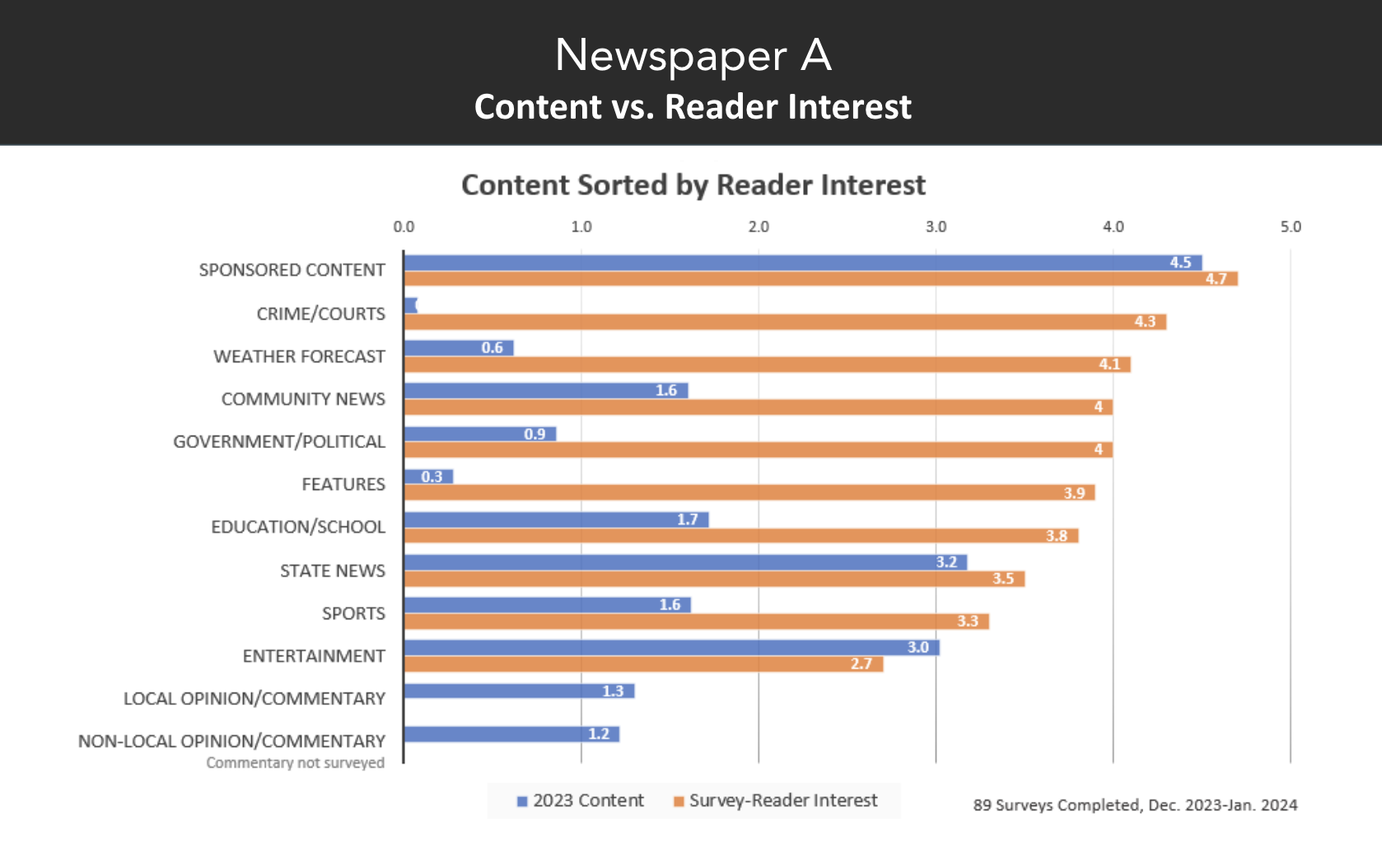
You can see in the above chart the huge differences between the content published across categories (the blue lines) and community interest in those topics (the orange lines). This particular community wanted much more information than was being published about crime/courts, weather, community news, government, features and education. (The other newsroom’s results were quite different in some areas.)
The chart below shows the changes they made in the first quarter of 2024, based on survey results.
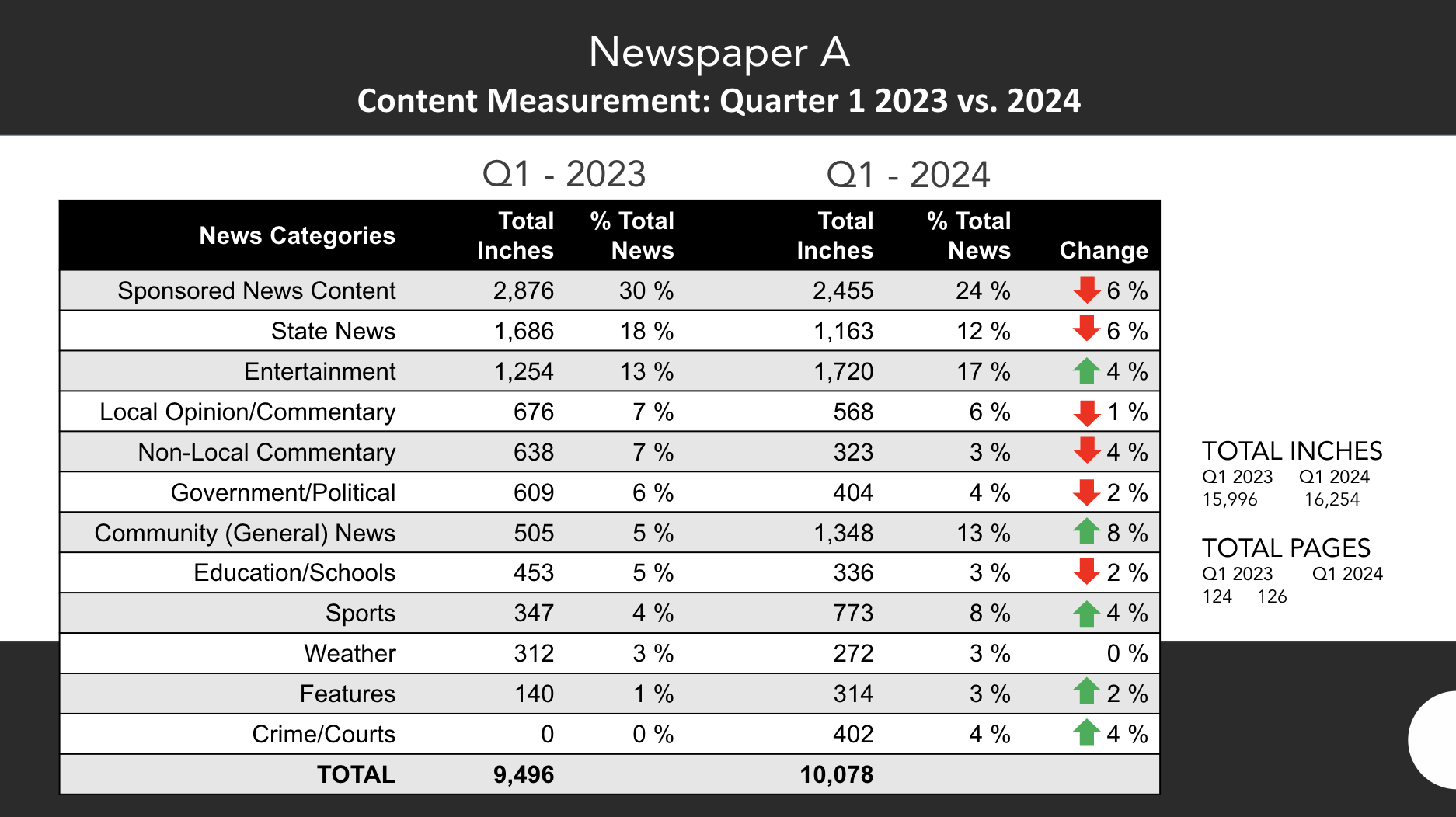
Thomas wrote this about the project:
“You can’t plan the news but you can have a news plan. Comparing actual news coverage from the prior year to the survey responses revealed differences that need to be addressed.
“In a small market, however, existing staff size and skills are a challenge. You can’t just change your skill set overnight and add more staff. For example, readers in both markets wanted more feature stories on local people and businesses. However, neither paper had a person skilled in the craft of feature writing. So they’ve started small, running more feature photos with heavy cutlines while developing their feature writing skills.
“In the final analysis, knowing what the audience wants, and being able to show them at the end of the year how the paper changed its coverage based on reader feedback is a winning strategy.”
For more information on this project, contact Thomas at mthomas@okpress.com.

Verified News Network’s citizen journalism curriculum
Community newsrooms around the world have dreams of training and deputizing citizen reporters. It’s harder than it looks, especially if you’re starting from scratch.
The team at Verified News Network created a curriculum as part of their OMC work.
VNN, a Native owned and Native serving news service, serves and empowers underrepresented and misrepresented groups, especially BIPOC communities, women and justice-involved people. Their platform includes an invitation to submit stories, but it was underused. Through surveys, they learned that some people lacked the confidence to submit their own stories.
Brittany Harlow, VNN director and VNN Oklahoma lead journalist, believed empowering community members could help her team both report on and share news with the communities she’s trying to serve and reach.
Her team’s goals with this project were to:
- Develop news literacy training for underserved populations.
- Educate underserved community members about media and news, including the basics of interviewing, writing and news business models.
- Publish citizen journalism stories on the VNN network.
- Deploy citizen journalists as trusted ambassadors in their own communities.
- Pay citizen journalists stipends for their training and published work.
The curriculum Harlow and her team created is outstanding. Here is a look at what it covers. It’s a truly comprehensive 101-level journalism course, designed for adults without previous news experience but with a desire to get involved in the news, not just understand it.
While participant outreach was general, Harlow was delighted to find a classroom of women already influencing their communities in one way or another. And the program was successful for the participants. Pre and post surveys showed increased understanding of how the news works and confidence in contributing stories.
Everyone who participated completed the program, and every member came from an underrepresented population. The curriculum was created with those communities in mind, touching on topics such as racial inequality in the news industry workforce and stereotyping in media coverage.
Harlow is working now on plans to share the curriculum with other interested newsrooms and programs. For more information, contact bharlow@verifiednews.network.
She offered this comment:
“This was such a rewarding experience, and fluid, as we adapted the curriculum to meet the needs of our class participants in real time. Not unlike how we adapt our coverage to the wants and needs of our community members as a newsroom. Our citizen journalists proved community members are a viable news resource throughout the course of this program, providing us with insightful feedback and impressive reporting. As we strive to reach more disconnected and rural areas, having the ability to train and work with citizen journalists is a huge win for us and for our communities.”
At Trusting News, we learn how people decide what news to trust and turn that knowledge into actionable strategies for journalists. We train and empower journalists to take responsibility for demonstrating credibility and actively earning trust through transparency and engagement. Learn more about our work, vision and team. Subscribe to our Trust Tips newsletter. Follow us on Twitter and LinkedIn.
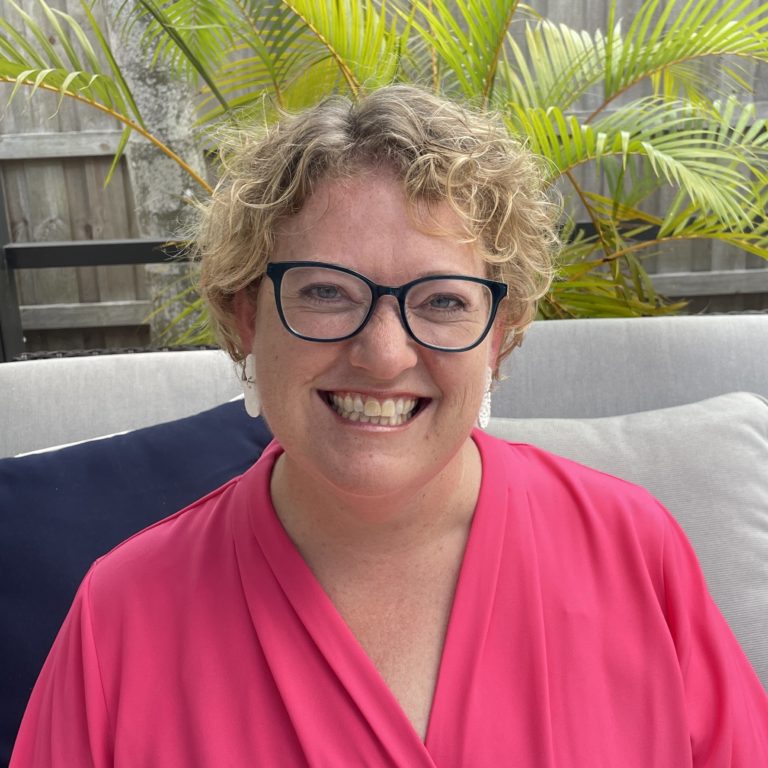
Executive Director Joy Mayer (she/her) founded Trusting News in 2016 after a 20-year career in newsrooms and teaching. She lives in Sarasota, Florida, and can be reached at joy@TrustingNews.org.
